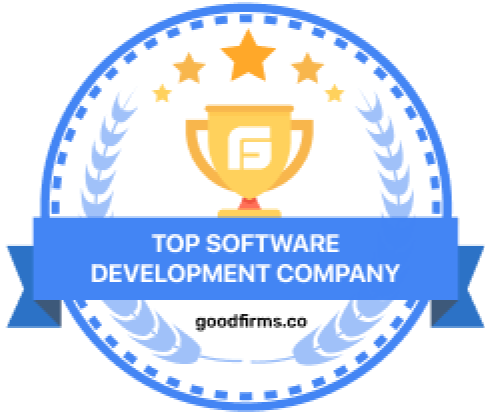Enterprises that drive further value in their respective businesses now increasingly rely on AI and predictive analytics to make better, optimized decisions and gain an edge in their market competition.
From one enormous data dump to another, though, the clear upside is the ability to analyze and draw meaningful insights and forecasts for future trends. What’s transformed in the way organizations function, innovate, and grow is reshaped by AI-powered predictive analytics, from finance and healthcare to retail and manufacturing industries.
This blog will discuss the basics of AI and predictive analytics, their effects on various industries, and real-life applications, and how businesses can tap into the full potential of these two tools.
Understanding AI and Predictive Analytics
What is Predictive Analytics?
Advanced analytics is a particular division used for predicting what will happen in the future by utilizing historical data, statistical algorithms, and machine learning techniques. Unlike descriptive analytics, which focuses more on understanding what happened in the past, predictive analytics aims to anticipate what will probably happen based on patterns in data. It is a part of analytics: descriptive, predictive, and prescriptive.
- Descriptive Analytics: It gives an idea about past performance by summarizing historical data.
- Predictive Analytics: Forecasts future trends based on data patterns and statistical models.
- Prescriptive Analytics: Recommends actions to optimize outcomes based on predictive insights.
Predictive analytics has seen significant growth as people developed artificial intelligence (AI) and data analytics. It began combining AI-driven automation, real-time data processing, and cloud-based analytics platforms, such as AWS Analytics Services and Azure Streaming Analytics, to expand accuracy and scalability.
This development is allowing organizations to make superior decisions with the aid of enormous datasets on a more real-time basis.
The Role of Data in Predictive Analytics
Data forms the backbone of predictive analytics. Organizations collect data from different sources, including customer interactions, sales transactions, social media activity, and IoT devices. This data can be either structured (like databases) or unstructured (like text or images). The quality of data will directly impact the effectiveness of the predictive models. Therefore,
- Data Quality: Accuracy, completeness, and consistency are very important factors for reliable predictions.
- Data Integration: Merging information from multiple sources gives an overview that facilitates enhanced analysis.
- Data Governance: This is about formulating policies of data management for compliance with data regulations, including GDPR.
From the use of quality data properly, a firm can make proper predictive models for actionable insights.
How AI Boosts Predictive Analytics?
Traditional predictive analytics were based on statistical models, but AI has improved it with deep learning, NLP, and AutoML. The combination of AI with predictive analytics has the following advantages:
- Accuracy: AI algorithms learn from new data inputs and make predictions that get better over time. This helps businesses to adjust their strategies according to emerging trends.
- Automated decision-making: Organizations can automate routine decisions based on AI-driven insights, which results in faster responses in dynamic environments.
- Real-time insights: Using cloud-based platforms, such as Azure with Power BI and AWS Data Analytics Services, business organizations obtain real-time insights for immediate action.
- Scalability: AI-based solutions can process large volumes of data from various sources with ease. This scalability ensures that organizations can scale up without being constrained by their analytical capabilities.
- Better Data Visualization: Modern BI tools provide intuitive dashboards that visualize complex datasets, making it easier for stakeholders to understand trends and make informed decisions.
Today, businesses exploit AI-powered predictive analytics through BI analytics tools, cloud-based analytics platforms, and AI consulting companies that specialize in data-driven decision-making.
Key Use Cases of AI and Predictive Analytics
1. Predictive Analytics in Banking and Finance
AI-powered predictive analytics are highly sought after in the banking and finance industry to make fraud detection better, risk management improved, and customer insights greater.
- Fraud Detection: Banks apply predictive models on transaction patterns in real time. Thus, by monitoring anomalies like a sudden burst in spending or unusual transaction locations, banks can flag potentially fraudulent activities before they balloon out of proportion.
- Risk Assessment: Predictive analytics enable banks to evaluate creditworthiness based on historical data related to income levels, spending behavior, and repayment history. This could lead to more accurate lending decisions while minimizing defaults.
- Customer Insights: Analyzing customer behavior through bank analytics tools like Power BI consulting services will help institutions tailor products and services to better meet individual needs.
2. AI-Powered Predictive Maintenance in Manufacturing
Manufacturing companies are using AI and predictive analytics to optimize maintenance schedules and reduce operational downtime.
- Predictive maintenance: IoT sensors will continuously monitor machine performance so manufacturers can forecast the moment when equipment could fail. It may then be scheduled for preventive maintenance before breakage happens.
- Cost-saving: Unplanned downtime is greatly reduced, saving the cost of repairs and lost productivity. For example, big data analytics helps automobile makers track sensor data in real time.
- Cloud-Based Solutions: AWS Certified Big Data platforms enable real-time analytics that give manufacturers the agility to respond swiftly based on actionable insights from the machine performance data.
3. AI-Powered Customer Personalization in Retail and E-commerce
Retailers apply predictive analytics in predicting consumer preference, pricing optimization, and personalizing customer experience.
- Personalized Recommendations: Based on analyzing the behavior of the customers with big data analytics tools, the e-commerce site would recommend customized products to its clients based on the history of previous purchases or browsed history.
- Dynamic Pricing Strategies: Based on the forecasted demand, competitors’ prices, and more, retailers may dynamically change prices. This approach makes sure to remain competitive yet also maximize revenues.
- Improved Marketing Campaigns: AI will be embedded into digital marketing strategies, for instance, through targeted advertising campaigns. This means the engagement rate for retailers can significantly improve with a message being conveyed to the right audience at the right time.
4. Predictive Analytics in Healthcare and Medical Research
The healthcare industry is witnessing AI-driven predictive analytics reshape patient care delivery systems and upgrade disease prevention mechanisms.
- Early disease detection: A hospital uses techniques of big data to analyze a patient’s file and identify possible early signs of diseases like diabetes or heart conditions before they are critical health problems.
- Personalized treatment plans: By using the historical patient data combined with the genetic information by advanced algorithms healthcare providers can make recommendations for specific treatment plans improving the patient outcome significantly.
- Operational Efficiency: Predictive analytics further optimizes resource utilization in the hospital by providing historical trends about patient admissions which help reduce the wait time of patients while promoting operational efficiency of the healthcare services.
5. AI and Predictive Analytics in Marketing and Sales
Business houses utilize AI-enabled analytics tools more to optimize marketing campaigns effectively and predict consumer behavior patterns correctly.
- Audience Segmentation: Businesses apply business intelligence analysis to determine consumer demographics with precise audience segmentation—enabling the targeted use of marketing campaigns that will likely strike a chord across these audiences.
- Sales Forecasting: Integrating history sales data with external information like market trends or economic indicators could enable businesses to arrive at accurate sales forecasts to make informed decisions on inventory management and maximize revenue opportunities.
- Chatbot Engagements: Using predictive software-based chatbots allows companies not only to interact with customers but also to offer recommendations based on user interactions, which significantly improves the overall user experience through automation capabilities.
Challenges in Implementing Predictive Analytics
Though the advantages of implementing predictive analytics are immense, organizations face several challenges during adoption:
- Data Quality Issues: Low-quality data can lead to incorrect predictions. Organizations must invest in robust data governance practices.
- Integration Complexity: It can be challenging to integrate new analytical tools with the existing systems. Businesses might need specialized help at the time of implementation.
- Resistance to Change Management: The employees resist the changes brought by new technologies. Good training programs are necessary for easy transition.
- Cost: Advanced analytical solutions often require a high upfront investment. Businesses should weigh the ROI carefully before proceeding.
- Ethical Considerations: While gathering personal information to analyze, the organization should address ethical concerns of user privacy. Transparency will ensure that trust with users is not lost.
Best Practices for Effective Implementation
Implementing AI-powered predictive analytics within your organization will require the following best practices for successful implementation:
- Set Clear Goals: Determine specific objectives you would like to accomplish using predictive analytics. This can include enhancing customer satisfaction or maximizing sales revenue.
- Invest in Training Programs: Invest in training that teaches employees to use new analytics tools effectively, which will accelerate adoption across all departments.
- Begin Small & Gradually Scale Up: Start small with pilot projects on specific topics before scaling to broader applications, which will provide an opportunity for adjustments based on initial findings.
- Leverage Cross-Functional Teams: During the implementation stages, encourage teamwork between IT experts and business analysts; diverse teams lead to a better outcome.
- Continuously Monitor Performance Metrics: Periodically review the performance of your predictive models against established KPIs; this ensures continued optimization over time.
Impact of Big Data
Big Data has become an essential enabler in improving the power of predictive analytics, as it delivers complete data sets that inform better decision-making:
- Volume & Variety of Data Sources: Organizations now have access to not just structured databases but also unstructured sources like social media feeds or IoT sensor outputs—which enriches analysis capabilities significantly!
- Real-Time Processing Capabilities: Advanced technologies enable real-time processing allowing companies to react promptly based on current conditions rather than relying solely on historical trends!
- Advanced Algorithms Utilization: Machine learning algorithms thrive when fed large volumes of diverse datasets enabling them to identify hidden patterns and correlations previously undetectable by traditional methods!
- Enhanced Customer Insights: By analyzing big datasets from various touchpoints organizations gain a deeper understanding of consumer preferences and behaviors leading to improved personalization strategies!
- Cost Efficiency: Leveraging cloud-based storage solutions reduces infrastructure costs associated with managing large datasets while providing scalable options as needs grow!
9. Future Trends
As technology continues evolving rapidly—the future holds exciting possibilities for further advancements within this field:
- Explainable AI (XAI) will gain prominence as stakeholders demand transparency regarding how algorithms arrive at specific conclusions ensuring accountability and ethical considerations remain prioritized.
- The integration of augmented reality (AR) and virtual reality (VR) technologies into analytical processes could revolutionize visualization techniques making complex datasets more accessible and engaging users effectively.
- More focus on self-learning algorithms capable of adapting autonomously over time to reduce dependency on manual interventions to streamline operations across industries.
- The hybrid human-machine collaboration will help create hybrid decision-making environments in which human intuition complements algorithmic recommendations for optimal results.
- More focus will be given to ethical considerations about bias and fairness during model development to ensure equitable outcomes for diverse populations.
Conclusion
AI-powered predictive analytics is no longer a luxury but a necessity for businesses to remain competitive in the digital age! By embedding intelligent solutions utilizing cloud-based infrastructures alongside trusted analytic platforms—organizations enhance operational efficiency drive smarter decision-making unlock new growth opportunities.
Whether you’re working in finance, healthcare, retail, or manufacturing, now is the perfect time to embrace these cutting-edge technologies paving pathways toward smarter, more informed futures ahead.
This will position your organization at the forefront of innovation, ensuring continued success in an ever-changing market landscape. If you are a business looking to get started with implementing AI and predictive analytics, we are here to help you with it. Get in touch with us.

Start a Project with Ajackus

































